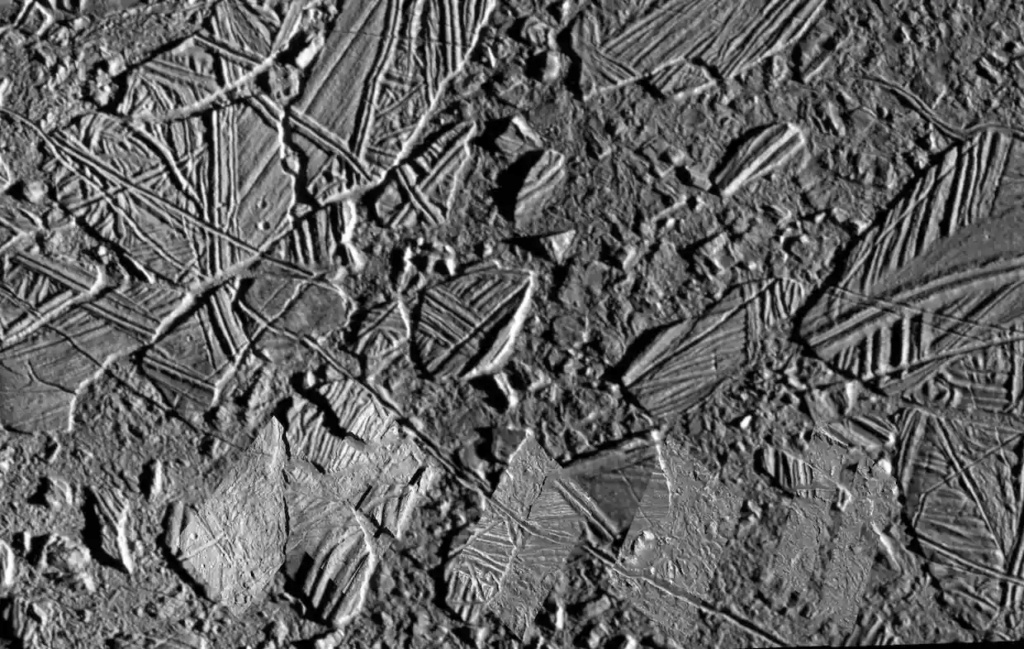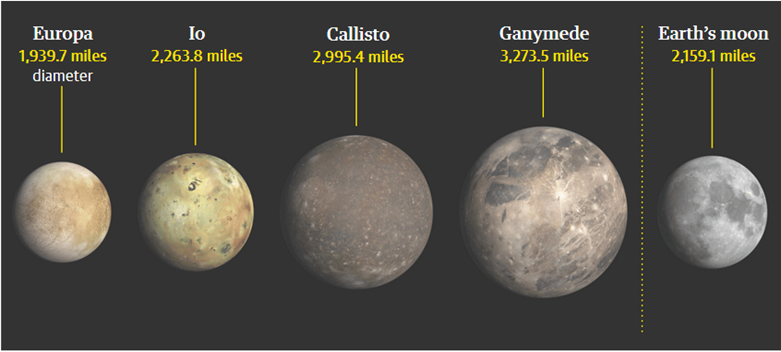Discovering life in Jupiter's moons... a mission about to be launched

The European Space Agency's JUICE mission will explore three of Jupiter's four main moons. (Image credit: Spacecraft: ESA/ATG Medialab; Jupiter: NASA/ESA/J. Nichols (University of Leicester); Ganymede: NASA/JPL; Io: NASA/JPL/University of Arizona; Callisto and Europa: NASA/JPL/DLR)
During the next few days, a probe will be launched into space on a mission that will last 8 years, in search of signs of life in other worlds of our solar system, specifically in the moons orbiting Jupiter.
The British newspaper "The Guardian" said that the spacecraft will not go to celestial bodies close to Earth , such as Mars , and instead will fly in space to survey the icy moons surrounding Jupiter.
With this mission, humanity opens a new chapter in the search for extraterrestrial life.
The probe bears the name "Jupiter's Icy Moon Explorer", and seeks to reveal an unknown feature in our solar system.
Details of the probe launch process
The probe will launch on April 13th.
It originates from French Guiana in South America.
The cost of the project is $1.4 billion.
This is the first space mission that seeks to explore icy moons that are relatively distant worlds, especially within our galaxy.

Jupiter and its largest moon, Ganymede
The largest reserves of water are found on worlds far from Earth, in deep space, and in the orbits around Jupiter and Saturn .
"We'd like to see if there are places around Jupiter where life could begin," said Oliver Whitsey, the expedition's scientist.
"We need to find a place that has internal energy and liquid water," he added.

The Conamara Chaos on the surface of Europa.
He pointed out that "the icy moons around Jupiter give us good reasons to believe that there is more water than what is on the surface of the Earth."
The idea that scientists' best hopes for finding extraterrestrial life depended on exploring ice-covered moons in space seemed absurd decades ago.
But the most prominent hopes that scientists had were attached to the planets Venus and Mars, and soon they discovered, through a space mission, that the surface temperature of Venus is 475 degrees Celsius, which is enough heat to melt lead .
Scientists discovered that Mars lost its atmosphere and surface water billions of years ago, and efforts to discover water supplies under its surface have not succeeded so far.
At the same time, American probes discovered that three of Jupiter's most prominent moons are worlds of ice that cover oceans of liquid water, the only necessary condition for the existence of life.
The satellites are:
Ganymede
Callisto
Europe

And the American astronomer, Neil Tyson, commenting on the issue of icy moons , says : "If there is any other place to search for life in it, it is here."
Source: websites

